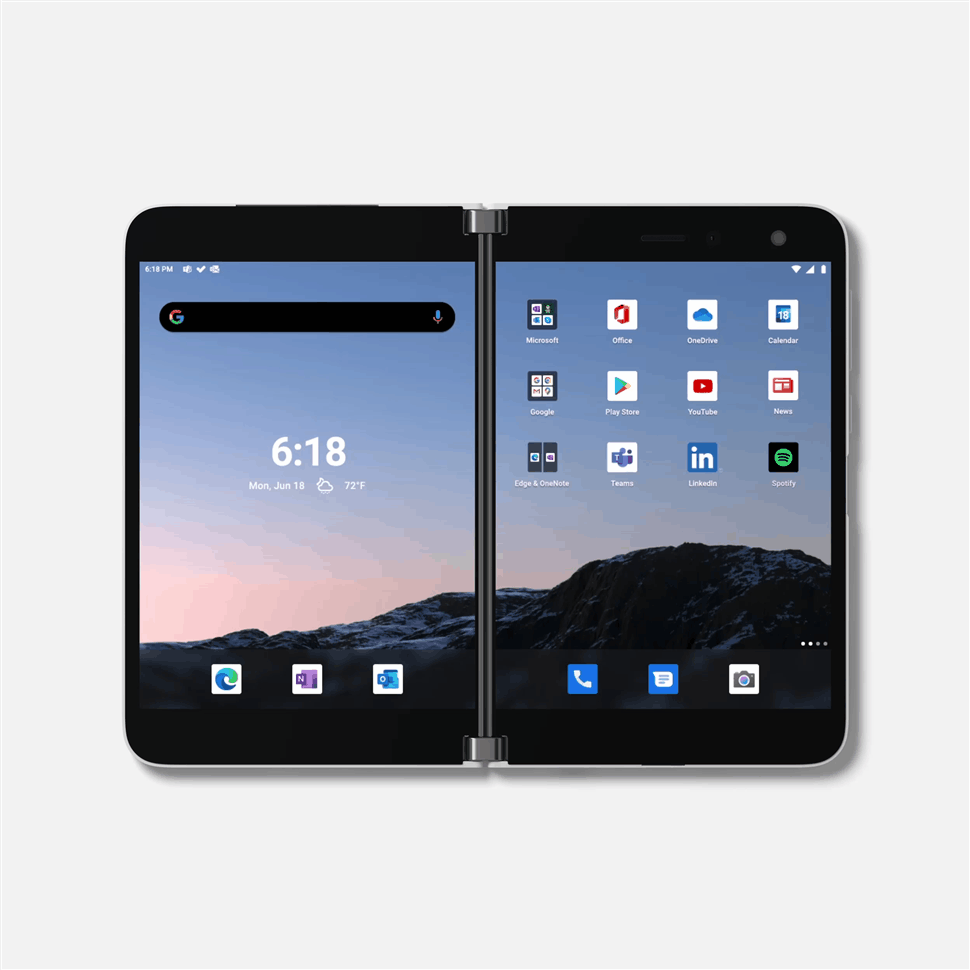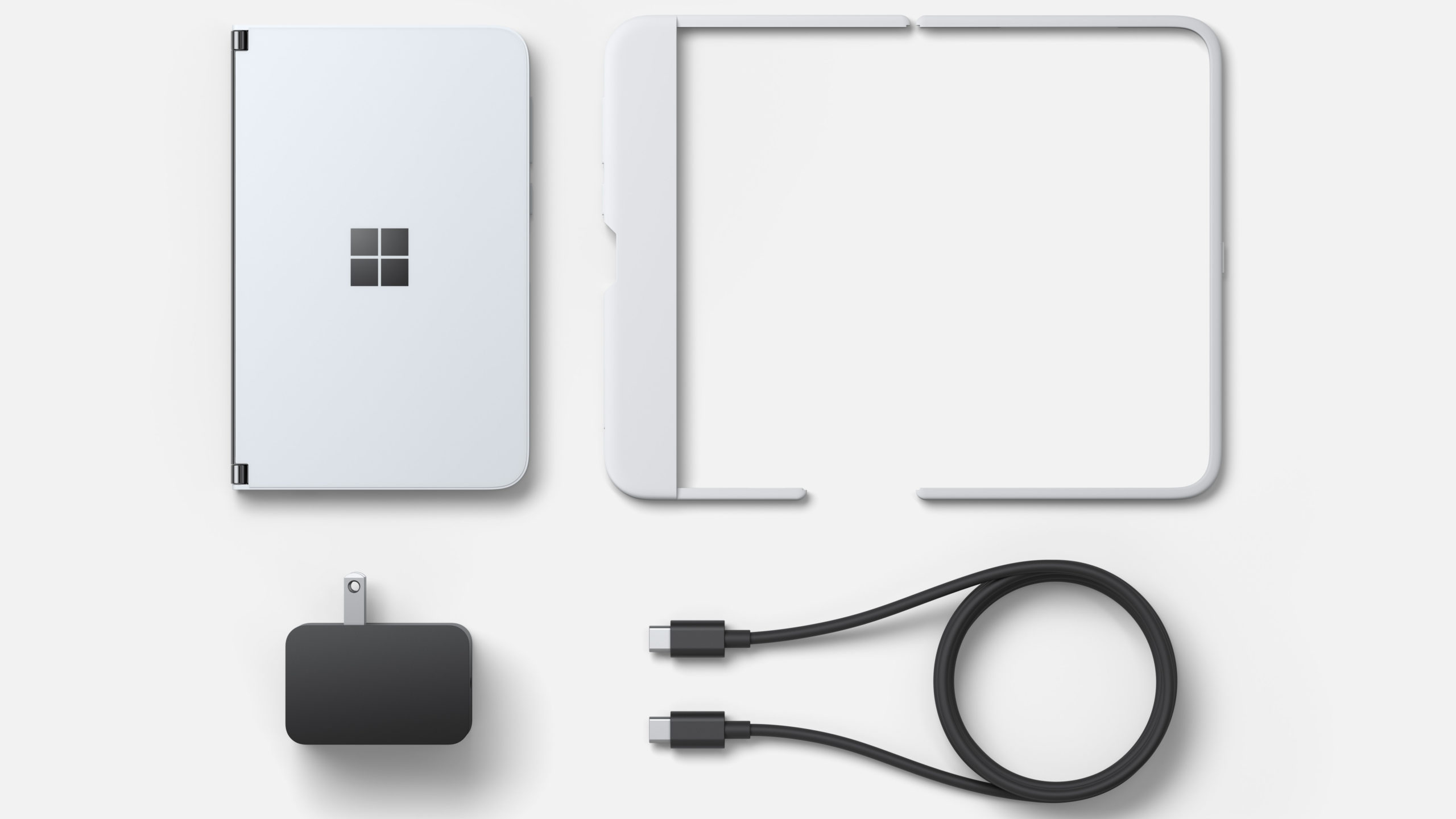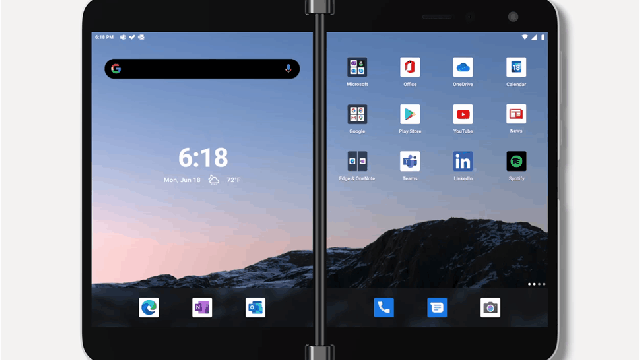Last spring, Microsoft surprised everyone when it announced the Surface Duo. Following months of development, Microsoft is finally ready to release the Surface Duo for real, and after learning more about it, I feel like the Surface Duo is so much more than just a dual-screen gadget or even Microsoft’s first Android phone. This phone feels like it’s created a whole new and exciting branch in smartphone evolution.
But first, let’s get the important details out of the way first. The Surface Duo will be available for pre-order starting today for a whopping $US1,400 ($1,955), with its official release slated for September 10. That’s a lot of money to drop on any phone, especially at a time when people are largely stuck at home.
Editor’s Note:Â Stay tuned for local Australian pricing and availability.
But in a way that adds even more emphasis to Microsoft’s bold new direction, which, in a briefing with the press, Microsoft’s chief product officer, Panos Panay, described as a big bet that no other company could really pull off. “The Surface Duo represents the Microsoft you love, with the Android you know.”
And yet, even that statement still kind of falls short. If you look around at today’s mainstream smartphones, their design has become quite formulaic. You usually get a reasonably large screen in front, along with selfie cam, some sort of biometric security system (either facial recognition, a fingerprint sensor, or both), some buttons on the sides, a port down below, and a bunch of cameras in back. It’s a pretty standard equation.
But the dual-screen phone is coming and seems poised to one day supplant the current standard design. As we look towards the future, in one corner we have devices with foldable screens, best exemplified by the Huawei’s Mate X and Mate XS, Motorola’s Razr reboot, and Samsung’s Galaxy Fold, Galaxy Z Flip, and the upcoming Galaxy Z Fold 2. Meanwhile, in the other camp, we have dual-screen devices such as the ZTE Axon M, a bunch of LG phones, and soon the Surface Duo, which looks to push the concept of a dual-screen phone to an entirely new level.
For starters, unlike LG’s recent releases, the Surface Duo was designed from the start with two OLED screens that combined measure 8.1 inches diagonally instead of simply relying on add-on accessories to deliver extra real estate. And when combined with what Microsoft is calling its smallest and most innovative 360-degree hinge ever, the Surface Duo has the potential to transform and adjust to a wide range of situations. You can open it and cradle it in one hand for that full dual-screen experience, you can rotate the screen all the way around to get a more traditional single-screen smartphone feel, or prop it up on a table like a tent. Honestly, the Surface Duo has more in common with 2-in-1s than it does with traditional mainstream handsets.
But even more important than that is the way Microsoft has optimised how apps work on the Surface Duo’s screen, which delivers a special kind of performance that extends beyond traditional ways of evaluating gadgets like benchmarks and app load times. For example, if you have something like Twitter open on one screen while the other is left unused, then when you click a link in the Twitter app, the Surface Duo knows to open that link on the other screen so as to fully maximise the phone’s capabilities. It’s a lot like the difference between using two monitors connected to your desktop at home or using a single screen, even it’s one of those fancy, extra-wide monitors, and it delivers multitasking that isn’t really available on other phones.
When you think about it, it’s actually quite difficult to multitask on a phone, because usually opening up an app sends everything else into the background, aside from things like YouTube’s picture-in-picture mode. But with the Surface Duo, you should really be able to look at multiple things at once in a meaningful way.
Also, Microsoft has optimised all of its homegrown apps like OneNote, Outlook, and others to support both a single-screen view and an enhanced multi-screen mode that spans both displays. So on one screen, you can see your inbox, while on the other you can compose an email, all in the same email app.
Some third-party app makers like Amazon and Spotify have also taken advantage of Microsoft’s new API, so that when using the Kindle app, you get a view that looks like a real book, including the ability to turn a page simply by flipping your finger across the screen. It’s this level of optimisation that should separate the Surface Duo from other dual-screen phones, and even things like the Galaxy Fold, which has a lot of potential, but needs better optimisation and integration to fully capitalise on its futuristic screen.
Microsoft has also created what it calls App Combos, which are shortcuts that allow you to open two apps simultaneously with a single tap. So if you want to open your email and calendar to better plan out your week, or Twitter and Instagram and get caught up with everything on social media, you can.
And in keeping with its mission of providing that familiar Windows experience, Microsoft has added features like a taskbar along the bottom, unapologetically square icons, and deep integration with Microsoft’s Your Phone app, which allows the Surface Duo to share its screen with a Windows PC, transfer files, and more.
Even the Duo’s design seems like an improvement upon previous Surfaces, with Microsoft claiming a thickness of just 4.8mm while maintaining an exceedingly clean and minimalist exterior. When asked why Microsoft went with dual screens instead of a foldable display, Microsoft technical fellow Steven Bathiche said it came down to three major sticking points: the durability of real glass, delivering a full 360-degree design, and the ability to include stylus support ” all things foldable phones have yet to deliver.

Compared to every other dual-screen phone that came before, the Surface Duo feels like the only one that’s fully committed to delivering a top to bottom multi-screen experience.
That said, there are still a few awkward aspects of the Duo. First, due to its hinges and the placement of its lone 11-MP camera, the Surface Duo has huge bezels, which seems somewhat regrettable because if it had a better screen-to-body ratio, the Duo’s would be an even more compelling creation.
Also, when compared to other super-premium phones, only having a single camera (which requires you to fully unfold the phone if you want to snap something other than a selfie) and mono speaker is a bit disappointing. Especially considering the Duo’s high price tag. That’s the same as a Galaxy S20 Ultra, which has true stereo audio and four rear cameras including one camera with a 10x lossless zoom.

And while the Surface Duo’s specs are respectable, featuring a Qualcomm Snapdragon 855 processor, 6GB of RAM, and 128GB of base storage, the Surface Duo’s guts aren’t exactly cutting edge either. And don’t bother looking for a headphone jack, cause the Surface Duo doesn’t have one.
Still, the Surface Duo has something a lot of other gadgets lack: vision. It feels like a phone that was designed with a mission instead of simply being a tech demo, and with Microsoft seeming having gone all-in, it’s a vision that could turn into a very enticing reality.
The Surface Duo will be available for pre-order today from Microsoft in select regions with in-store availability starting September 10.
